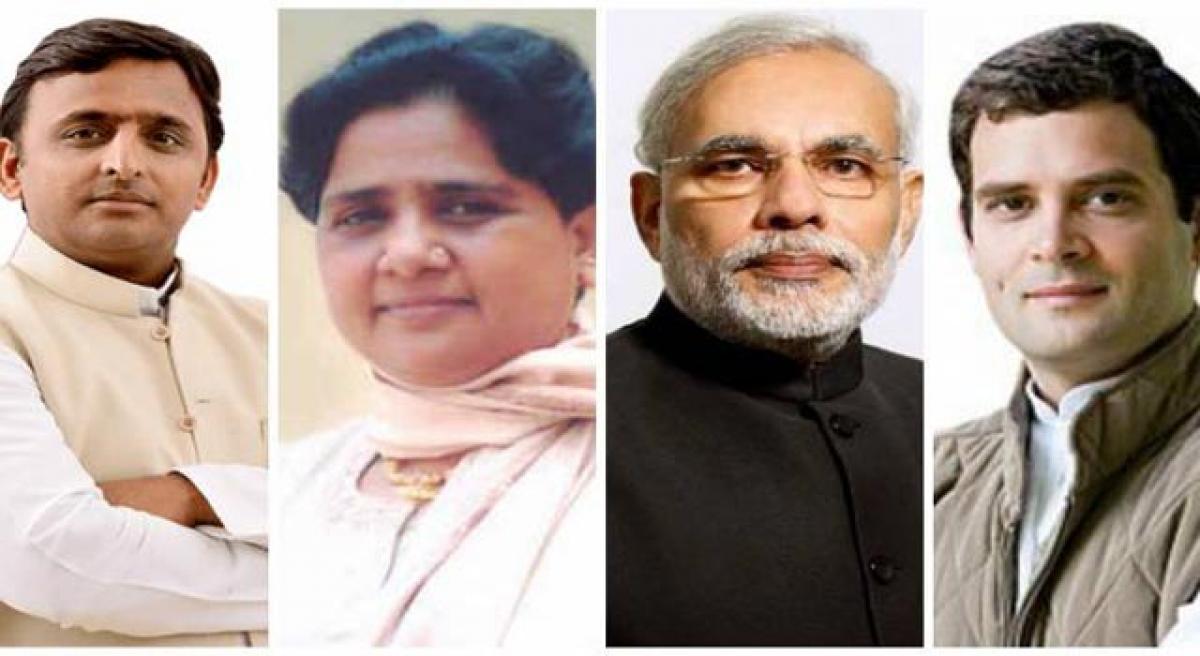Live
- Congress opens shop of lies & loot during elections: Rajasthan CM
- Indian startups raise over $182 million in funding this week
- Use of VPNs 'un-Islamic', declares Pakistan's Council of Islamic Ideology
- AP Dy CM, assembly speaker condoles death of former MLA Nara Rammurthy Naidu
- Senegal wraps up campaigning for legislative elections ahead of vote on Nov 17
- Free Study Materials Distributed to Needy MBBS Freshers by Seniors
- Boeing lays off over 400 members of professional aerospace union
- An egg a day may boost memory, brain functions in women: Study
- Ready for debate on BRS 10 year rule and Congress one year's, TPCC Chief Mahesh Goud
- Director Arjun Jandhyala speaks about ‘Devaki Nandana Vasudeva’
Just In

‘A week is a long time in politics’ is a famous saying. Attributed to the British PM, Harold Wilson, who uttered these words in the lead-up to the polls held in 1963, it rings true a good five decades and more even in the context of the electoral battle that is currently underway in India\'s most populous state, Uttar Pradesh.
‘A week is a long time in politics’ is a famous saying. Attributed to the British PM, Harold Wilson, who uttered these words in the lead-up to the polls held in 1963, it rings true a good five decades and more even in the context of the electoral battle that is currently underway in India's most populous state, Uttar Pradesh.
With two more phases of the marathon seven-part elections to be held on March 4 and 8, it is no exaggeration if one says that the nation is waiting with bated breath to see what the results come up with on March 11, the day of counting.
By all accounts, the polling percentage till the last one a few days ago has been clocking higher than the earlier elections held in 2012. It may have dipped below 60 per cent in the fifth phase, but it was still higher than the corresponding one five years ago when it was just hovering around 55 per cent. Of course, the first four phases had seen an above 60 per cent turnout, a trend which was not noticed, as elucidated, in the earlier polls for sure.
With the Bihar experience of NDA a bitter one just under two years ago, it has become a mathematical exercise for the upcountry press to speculate if the neighbouring state of 'Puttar Pradesh' ( punning on the two young leaders of Congress and Samajwadi Party) too is slated to go the same way.
The alternating theories of caste combination and communal calculation and its impact have found enough traction in their coverage already, based on which it seems that the micro-managing BJP may find it an uphill task to reach the magical mark of 265 seats in a house of 403, their original target as they braced themselves for the elections months ago.
In this battle for the ballot, tantalisingly poised at the time of writing, the national parties seem to have had their own share of advantages. A disoriented Congress, which did not have an enthused cadre or committed set of leaders to see it through the poll process even at the end of the last year, moved from confrontation to cooperation with a rival party and if reports are to be believed, sitting in an advantageous position.
As old timers of Samajwadi Party with which it joined hands point out, the vote transfer of supporters from SP to Congress has been smooth and trouble-free, by and large keeping the coalition dharma alive. The reverse, however, has been fraught with its own barriers, the chief one being that of caste supremacy.
Since independence, the grand old party has been favoured by the top and bottom rungs of the caste structure of Hindu society, meaning the upper castes like the Brahmins and Thakurs and the Dalits at the farthest end of the scale. With the SP not being a favourite of both, there are speculations about how much of these two castes would have actually preferred to honour their part of the deal, given that the oppressed castes have alternatives in the form of Bahujan Samaj Party.
The upper castes are of course free to vote for any party, including BSP but whether they would have voted exclusively for Akhilesh Yadav's outfit as a pre-arranged option is still doubted. The Bharatiya Janata Party too has had its ups and downs as far as the backing of the Brahmin-Bania communities are concerned.
With the effect of demonetisation, not yet known in full, except that it had not impacted the local polls in Odisha and Maharashtra held recently, it is anybody's guess whether the traditional vote banks of the Hindutva party are going to be finicky about supporting it entirely. Still, hardened political watchers of Uttar Pradesh seem confident that the top order of the majority community, which makes up nearly 30 per cent of the electorate would plumb for Modi who has promised development and equity for the state.
The slog overs, as some reports put it, are reserved for the next few days when the 'UP ke ladke' Rahul Gandhi and Akhilesh Yadav get on to a massive 11-km road show in Modi's Varanasi, which the PM is expected to counter a day later on March 5. As the elections come to an end on March 8, it would have set the course for the next round of 2018, if not the mega one of 2019 awaiting the Indian public, already.
By K Naresh Kumar

© 2024 Hyderabad Media House Limited/The Hans India. All rights reserved. Powered by hocalwire.com







